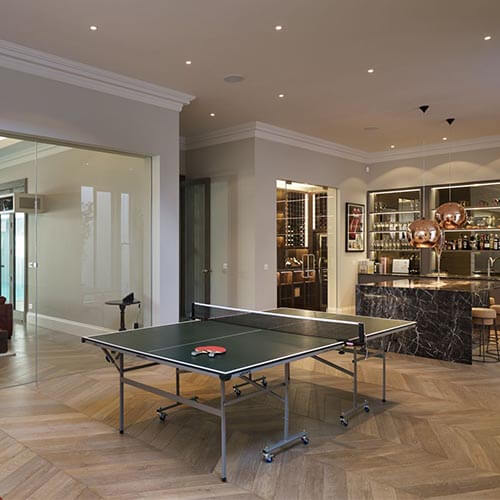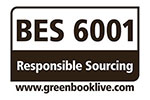01732 496 523
Internal Tanking
‘Tanking’ is a term used to describe internal or external waterproof barriers that are used to protect below ground structures from water ingress, including cellar tanking.
The British Standard for Waterproofing 8102:2022; ‘The Code of Practice for the Protection of Below Ground Structures from Water Ingress’ refers to these waterproof barriers as ‘Type A Systems’.
Type A waterproofing systems can be applied either:
- Internally (on the negative side) such as the Newton HydroCoat System
- Or externally (on the positive side) such as the Newton HydroBond System
External Type A Waterproofing: What is External Tanking?

Waterproof barrier membranes that can be applied to the internal side of a below-ground structure are typically liquid-applied membranes or slurries that can be applied using a brush, roller, trowel, or spray machine directly to the surface.
As these internal tanking products are required to actively hold back water, it is important to identify the best product to use and prepare the surface correctly.
When a completely dry internal environment is required, Newton recommends a combined waterproofing solution utilising Type A and/or Type B, as well as a failsafe Type C system.
Type C: The Best Basement Waterproofing Method
How do you Tank an Internal Wall?
To decide on the best internal tanking solution, system or product it is necessary to consider the guidelines set out in BS 8102:2022 and the technical standard documents of your insurance company, where they explain the typical defects that could occur in waterproofing systems, such as:
- defects owing to design;
- defects owing to poor workmanship;
- inappropriate use of the materials being used and defects owing to the specific properties of the materials being used; and
- defects caused by follow-on trades and site operations.
Traditional Tanking
Traditionally, bituminous barrier materials were used internally and had to be sandwiched within a further internal construction to hold them tight against the existing structure in an attempt to hold back the hydrostatic pressure.
Inevitably, the internal holding structure would include voids, whereby the bituminous product would bulge under pressure from water and then rupture, causing water ingress. Consequently, these products evolved into polymer-modified bitumen, manufactured as self-adhesive or torch-applied sheet membranes.
However, with these products, the water would still track freely behind the membrane and enter the internal space at poor laps.
The defects that typically occur from cutting, splicing, and sticking sheet membranes at awkward transitions and corners are often associated with poor workmanship and the specific properties of the material itself, thus indicating that this traditional membrane is inappropriate for use.
British Standard 8102:2022 now excludes sandwich waterproofing and figure 2a in the Standard only allows for fully bonded membranes internally to provide resistance to negative hydrostatic head, or counter thrust pressure relevant to the depth of use of water pressure.
Internal Tanking Best Practice
The British Standard for Waterproofing advises that the issue of repairability should also be considered, and the feasibility of remedial measures assessed, to ensure that any of the aforementioned defects are avoided with the methods and materials that are used within the internal waterproofing solution.
This means that any potential defects or system failures that could arise should be taken into account as part of the overall waterproofing design for the structure.

Newton HydroCoat 107 Elastic 2K, a cementitious flexible waterproofing membrane.
Many insurers accept the advice given in BS 8102:2022, which outlines the effects of a bonded or partially bonded barrier and have now differentiated between the systems. Thus, where a structure is subjected to water pressure, only a fully bonded system should be used.
A fully bonded system can withstand the counter thrust or negative water pressure and prevent water from tracking into the internal area. Newton’s cementitious and liquid-applied products within the HydroCoat System can be used to meet these requirements and can better achieve a homogenous internal tanking solution with no physical laps.
The Newton HydroCoat System includes a range of cementitious products to provide a fully bonded solution. The range varies between products that use hydrophobic additives such as the HydroCoat 908-LB added to a standard sand/cement mix, products that use polymer-modified cements such as the HydroCoat 203-RM and HydroCoat 105 1K, and epoxy or acrylic resins including Diasen WATstop, HydroCoat 103 2K and HydroCoat 107 Elastic 2K, which offer varying degrees of hardness, flexibility, and chemical/gas resistance to ensure that the requirements of the project design are met.
If you are involved in an upcoming waterproofing project that requires a comprehensive internal tanking solution, designed and guaranteed by industry experts, please contact our Technical Team using the form below, by calling 01732 360 095 or emailing tech@newtonwaterproofing.co.uk.
Customer Success Stories
Our latest customer reviews from Feefo - the award winning review platform

Speak to our friendly, expert team
Our staff are able to provide guidance for projects of all sizes, whether you require some general advice about damp or waterproofing, or support with technical drawings and specifications.





















